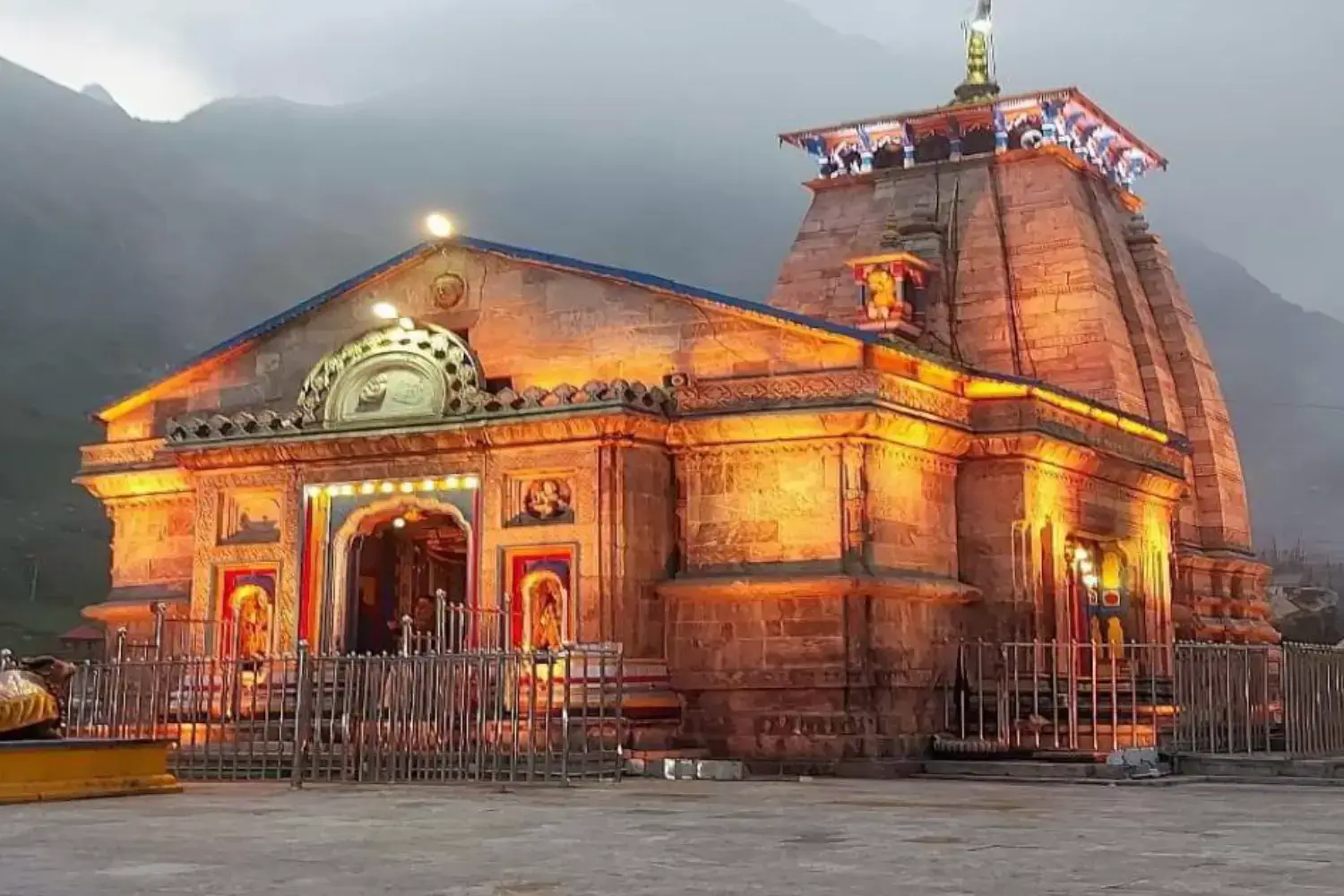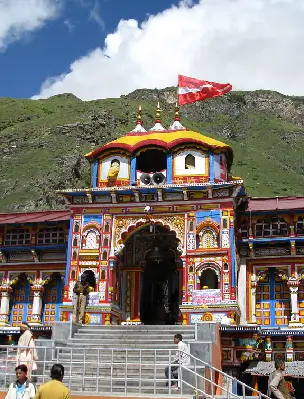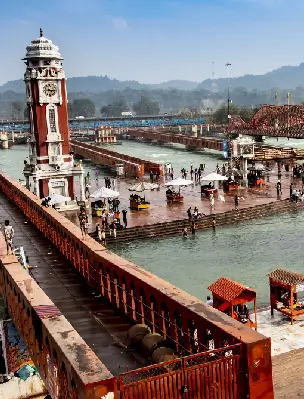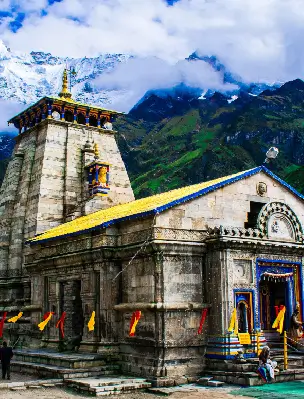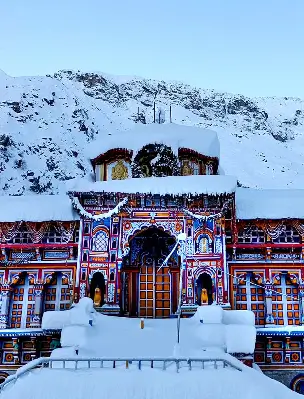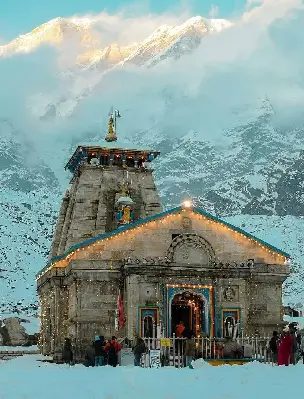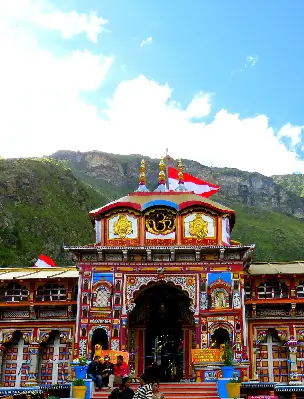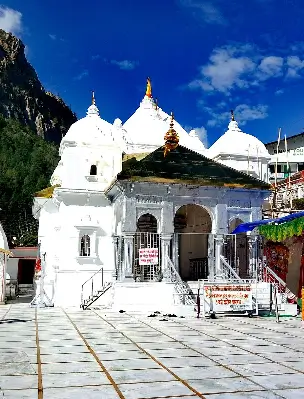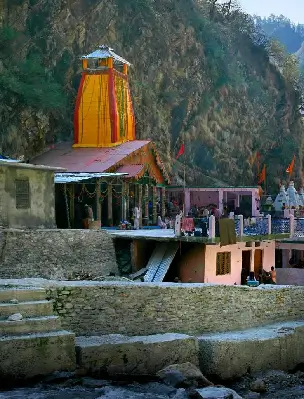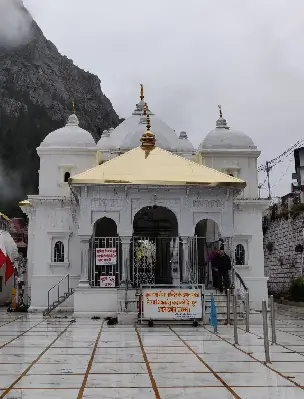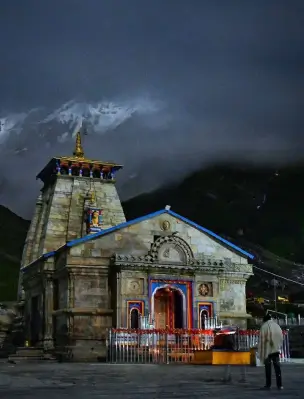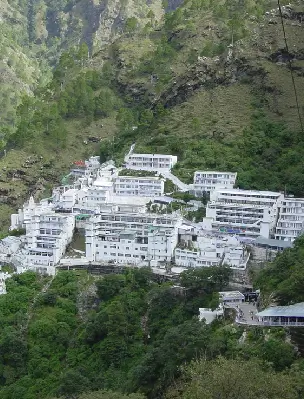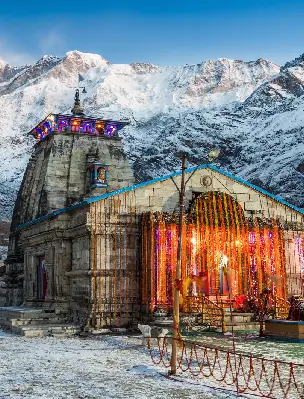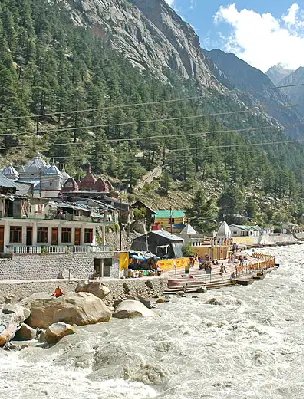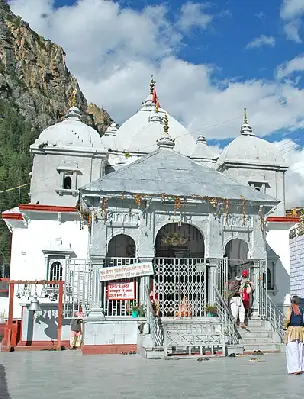History of Shri Kedarnath Temple
Read the in-depth insights on the history of Shri Kedarnath Dham, one of the main destinations of the Uttarakhand Chardham Yatra and the 11th famous Jyotirlinga temple of Lord Shiva.
One of the most popular spiritual culture centres in India, Kedarnath has a history as intriguing as its popularity. Kedarnath Valley, located at an altitude of over 11,000 feet is a site of unmatched beauty alluring people all around the sphere. Surrounded by majestic white-topped Himalayan mountains, the Kedarnath Temple is the centre of everyone's interest in this valley.
The Kedarnath Temple has an immense reverence in Hinduism and it has unwaveringly lived through a long history. The temple has many legends, mythology and stories associated with its origin, and is part of various miracles. Met various tragic hazards throughout the long history of Kedarnath Temple, yet nothing affected its glory and it still remains a nerve centre of the cultural and religious realm of India.
Origin Story & Legends
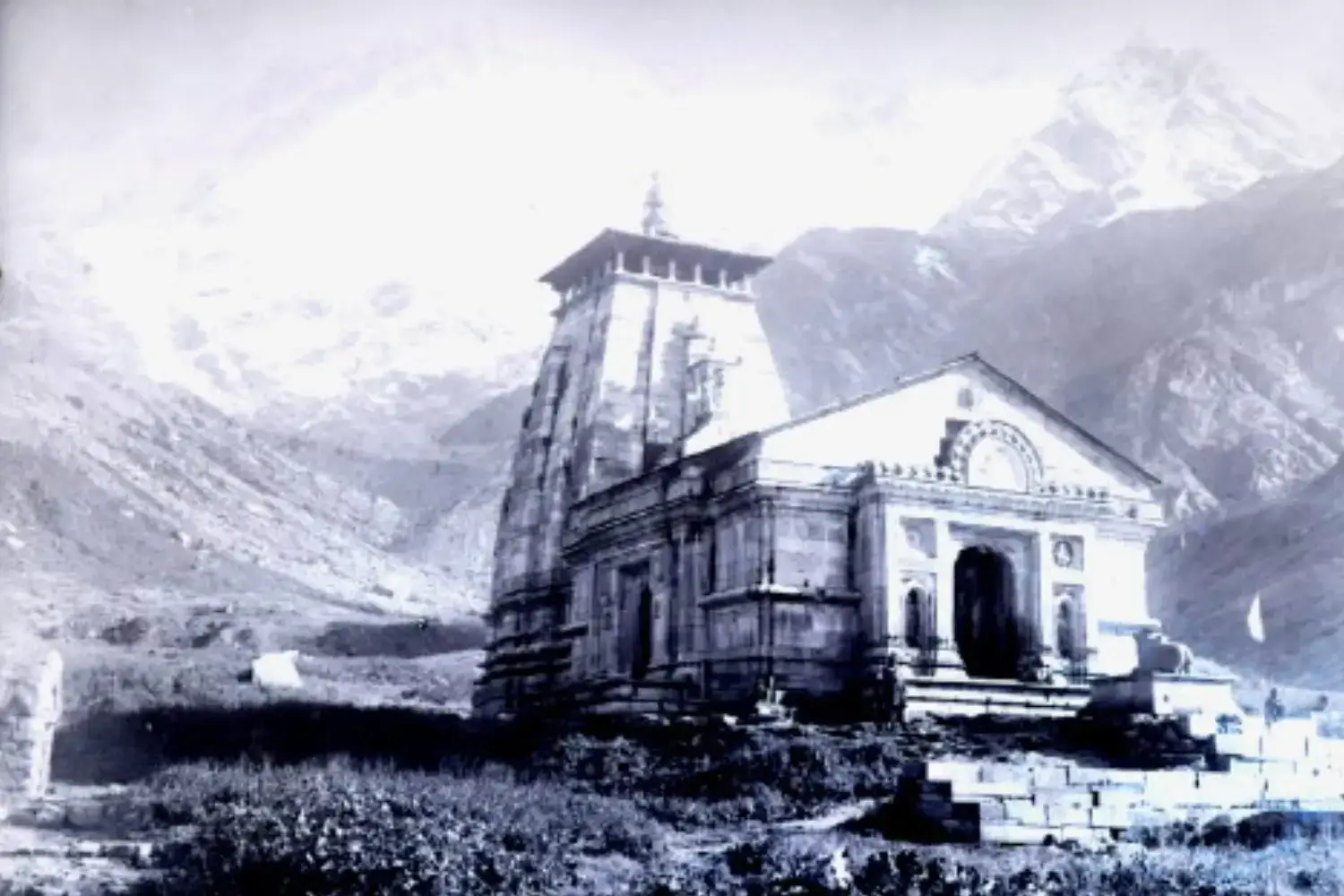
After the great war of Mahabharat, the Pandavas - five brothers who have won the war, sought Lord Shiva to serve as a penance for killing their relatives and kins in the war. Contrarily, Lord Shiva was using a disguise as a bull to not get along with Pandavas.
When Pandavas found him in the Himalayas roaming in a bull's form, they chased him until he disappeared in Kedarnath. Although, Bheem - one of the Pandavas, got a hold on the hump of the bull which he did not let go. The hump plonked at the very exact location even after the bull's body disappeared. The Lingam in the Kedarnath temple is thus in the form of a hump. The other parts of the bull appeared in four other different locations. The all five destinations are collectively called Panch Kedars of Uttarakhand. Nevertheless, pleased with Pandavas' perseverance, Lord Shiva absolved them from their sins, and Pandavas built Kedarnath Temple there.
Another legend tells the story of twin sages named Nar and Narayan, who asked Lord Shiva to dwell on earth permanently at Kedarnath, as a boon to their long meditation.
It is also believed that Shiva meditated at Kedarnath for an extended period of time, and the temple marks his presence from the times of old.
Historical Background of Shri Kedarnath Temple
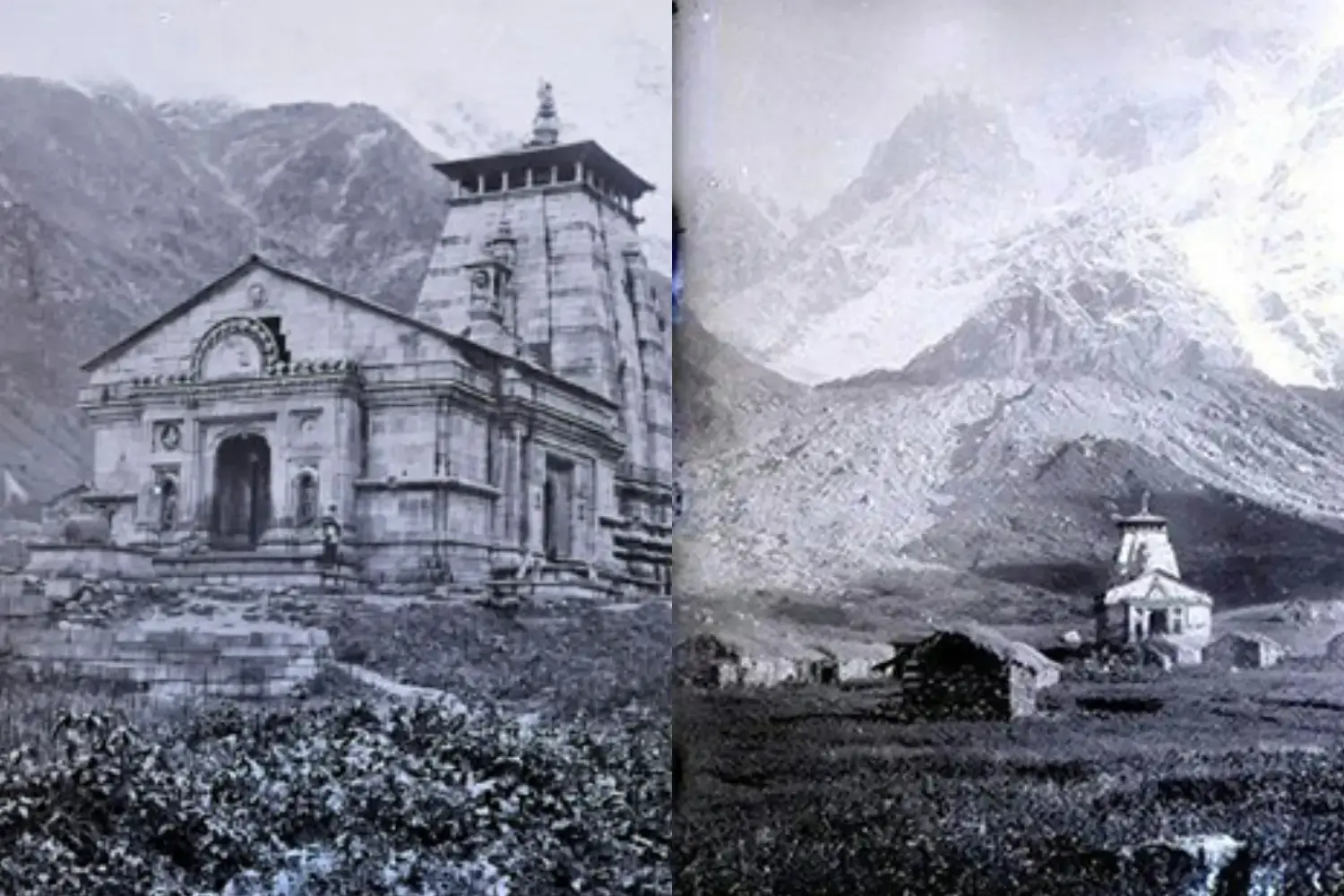
In the middle of Himalayan glaciers, Kedarnath Temple unequivocally traces its roots back to pre-historic period. Although there are several origin stories, the most prevalent belief states that the temple was originally built by the Pandava brothers mentioned in the Hindu epic Mahabharat. According to Hindu calendar, the date of the Kurukshetra war, fought by Pandavas in the Mahabharat epic, is around 3100 BCE, which also will be the epoch of Kedarnath Temple. Though many historians believe that the Mahabharat was fought somewhere between 10th century BCE to 8th century BCE, it is a topic of debate for the history of Kedarnath Temple. In any case, most studies suggest that the origin of Kedarnath Temple could not predate 3,000 years from present.
However, the present form of Kedarnath temple is a restructured avatar, built in the 8th century by an Indian vedic teacher and philosopher, Adi Shankaracharya. Adi Shakaracharya is also known for reviving and establishing many other Hindu pilgrimage sites including the four main shrines of Hinduism - the Char Dhams.
Some written documents also say that the temple was initially made from stone and wood in the 8th century, but fell into disrepair due to its extremely remote location. Later it was rebuilt using gray stones and marbles by Raja Bhoj in the 11th century.
Another interesting fact about Kedarnath Temple is that, many geologists claim, the Kedarnath Temple was engulfed totally or partially in the glacial ice for almost 400 years somewhere between 1300-1900 AD, during a period known as the Little Ice Age. According to the Scientists of Wadia Institute of Himalayan Geology, Dehradun, the yellow lines and the striation marked at various places on the outer wall of the temple points to the glacial activity in the region. This signifies the brilliant architectural build of the Kedarnath temple.
Architecture of Shri Kedarnath Temple

The Kedarnath Mahadev Temple is ancient, and carries various features from historic and modern times. It is located in between sky touching peaks of Himalayan glaciers; thus, the original architecture was generously designed not only to look majestic amidst its surroundings but also withstand the harsh mountainous weather and natural disasters. The temple is built by perfectly interlocking roughly-hewn large stone slabs with the help of iron clamps but not any other binding material.
The Structure
The Architecture of Shri Kedarnath Mandir is a classic work of north Indian architecture in Nagara style. The temple stands on a raised plinth base of sturdy stone. This strong base ensures that the structure stays adamant. The overall temple structure includes two sections, a Garbhagriha (Sanctum sanctorum) and a mandap (Main hall) to the fore. The Garbhagriha is a tall pyramidal structure with shikhara where the Lord Shiva is worshipped, while the Mandap is where pilgrims gather before entering Garbhagriha. Mandap is supported by short stone pillars.Garbhagriha and Mandap has a tapered roof to shed snow during heavy snowfalls, and ensures more stability.
Idol and Statues
The idol of Shiva enshrines in the Garbhagriha in the form of Kedarnath Jyotirlinga, a symbolic presentation of Mahadev. Kedarnath has the most distinctive Lingam, a naturally formed conical rock, not carved artificially whatsoever. Just at the entrance of Garbhagriha, in the Mandap, is the idol of Nandi, the sacred bull and lord Shiva's vehicle.
Additionally, the Kedarnath temple has many statues and carved designs of deities and mythological figurines placed on the inner walls depicting stories of the past. The statues include Pandavas, Krishna, Virbhadra, Draupadi, and many others.
Exterior
The exterior of the temple is austere yet elegant. There is a stone idol of Nandi facing the temple just outside the Mandap (Main Hall) which adds to the grandeur and signifies the true devotion towards the God. Although the temple was originally built over 3,000 years ago, it has undergone numerous renovations. But using the same materials as already in the temple, has aided in retaining the original form of the temple restructured by Adi Shankaracharya.
Kedarnath Flood 2013 & Its Impacts
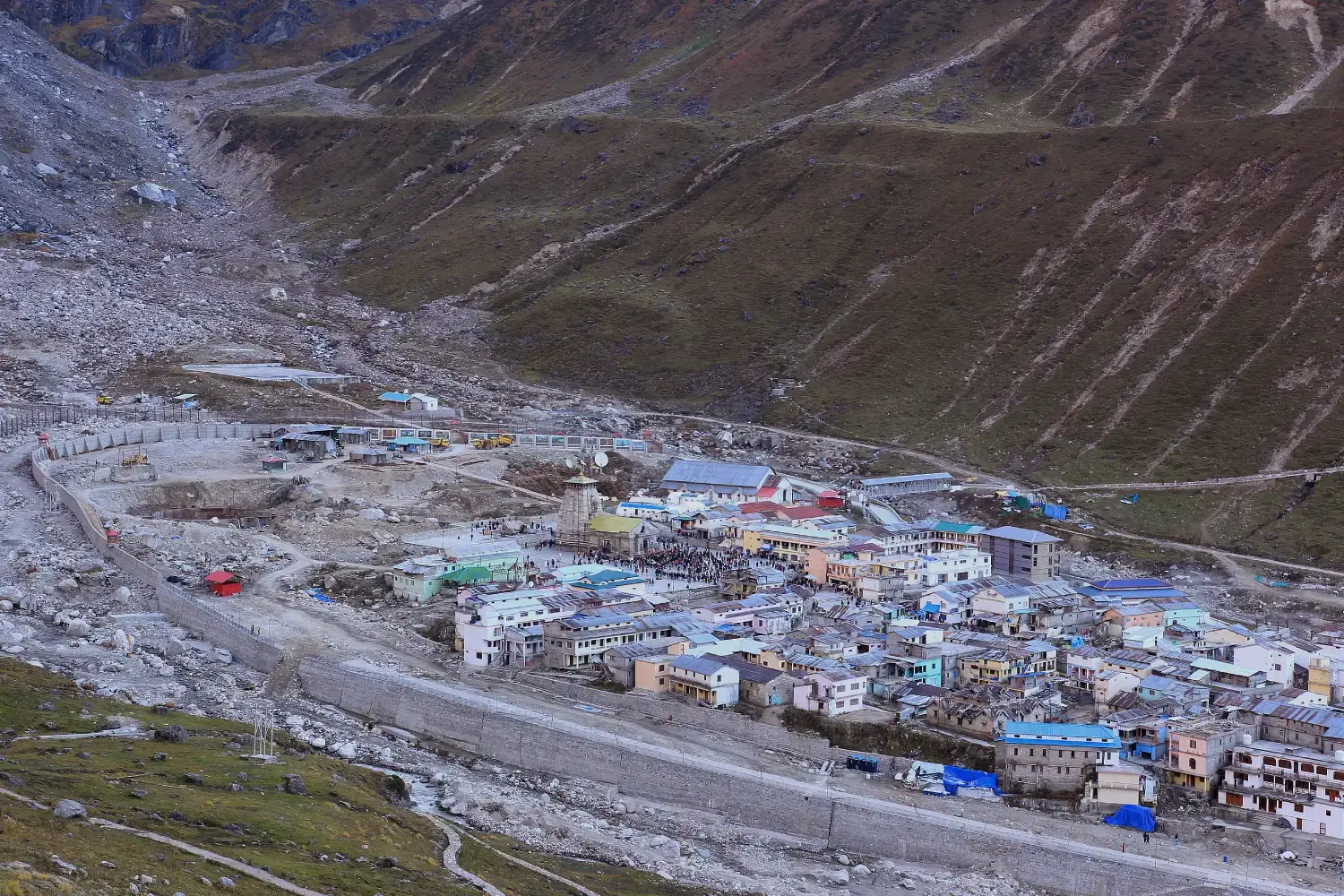
In 2013, Kedarnath met with a devastating flash flood that may have wrecked the Kedarnath Temple. On June 16th and 17th of 2013, the state of Uttarakhand received an unusual amount of rainfall that led to the melting of the Chorabari glacier behind the Kedarnath valley. This caused sudden deluge from the Chorabari Lake which erupted down to the Mandakini River washing everything away in its path. Houses, Shops, hotels, roads, everything was destroyed and carried away in the gushing surge.
The cascading water from the glacier caused landslides and carried huge amounts of silt, rocks, and boulders that could have shattered even the Kedarnath Temple, but a miracle happened. A huge rock rolling the slope stuck just behind the Kedarnath temple obstructing the water and debris to ravage the Temple. A lot of people took shelter inside the Kedarnath Temple until the Indian Army airlifted them.
Though the Kedarnath temple was protected, water gushed on both sides of the Temple destroying everything around it. The floods of 2013 claimed the lives of over 5000 residents and pilgrims, amongst whom many were missing. The flood damaged sites all across Uttarakhand, Himachal Pradesh, and Nepal affecting over nine million people and countless animals. It also affected the pilgrimage sites like Gangotri, Yamunotri, and Badrinath.
The 2013 floods of Uttarakhand were one of India's worst disasters whose worst hit was Kedarnath valley. The recorded damages accounted for hundreds of millions of dollars. The damage to bridges and roads was around $285 million, dam projects with around $30 million, and the loss to state tourism was around $195 million.
Restoration and Preservation Efforts After Flood
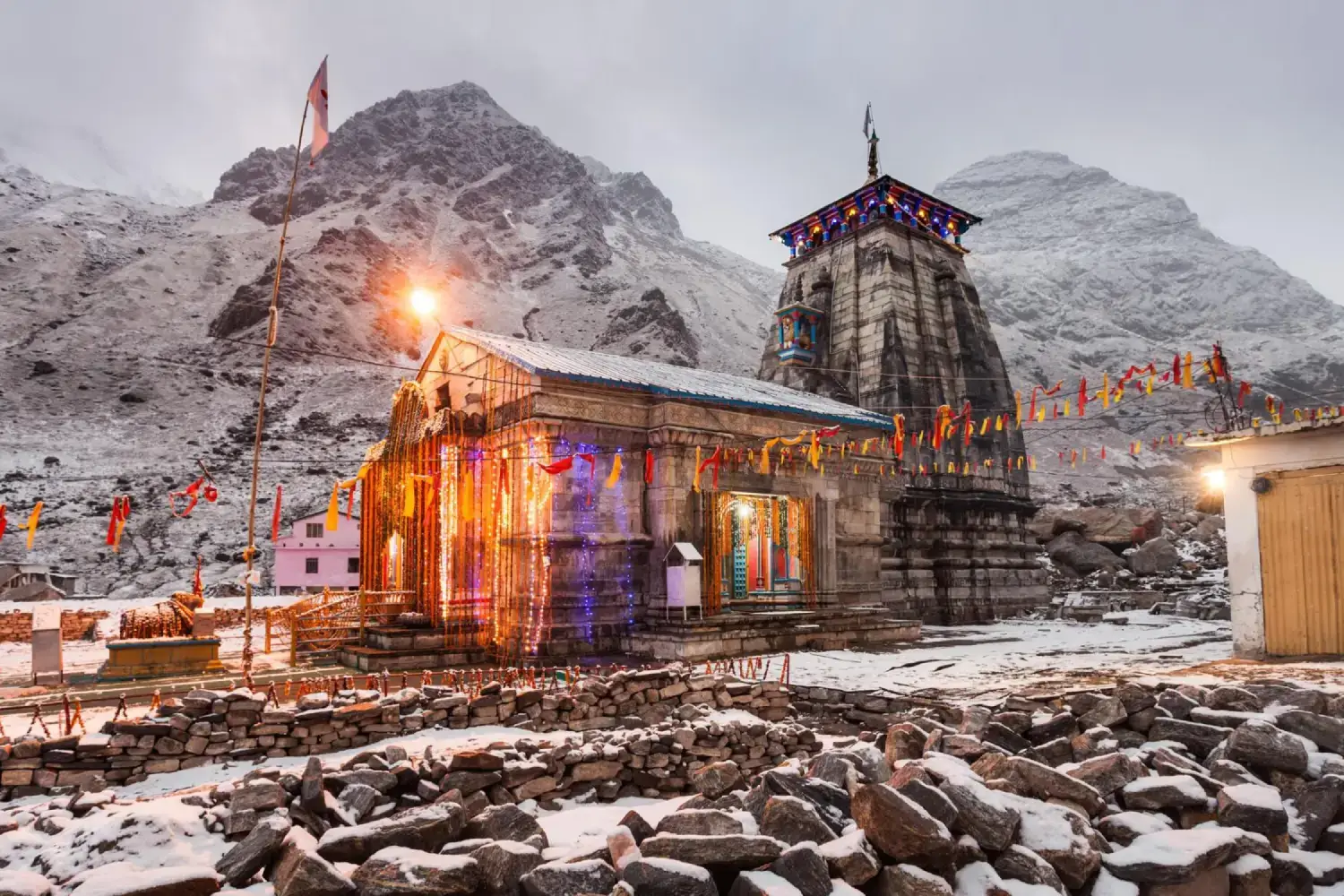
In the aftermath of 2013 floods, Kedarnath Valley required revamping and revival of its historical charm. The flood brought so much debris that it covered the town up to several feet. The state suffered a huge economic blow of about 3.8 billion USD, according to the World Bank estimate, which was in fact higher than the annual budget of the state.
Former prime minister Manmohan Singh announced ₹1,000 crores (10 billion) of aid to handle the relief and rescue operations and Uttarakhand's then-chief minister Vijay Bahuguna opined that the shrine will remain out of bounds for pilgrims for Kedarnath Dham Yatra until the next year.
In March 2014, the project for restoration and reconstruction of Kedarnath Valley (or Kedarpuri) and Kedarnath temple started, with its foundation laid by Prime Minister Narendra Modi. Nearly ₹700 crores were given to the state for medium and long-term reconstruction.
The Reconstruction Project
The reconstruction project was introduced to revive the religious, aesthetic, and ecological sanctity of Kedarnath. Before the flood, Kedarnath temple was surrounded by unorganised buildings and congested lanes restricting the temple visibility and resulting in an unattractive township.
In the Kedarnath restoration project, A wide path is designed for an approach leading from a circular arrival plaza for tourists at the base up to the temple at the top. The approach boasts wide steps with landings at regular intervals paved with stones cut from boulders laid along the natural terrain of the valley.
This design allows pilgrims to comfortably progress to the temple while enjoying the clear view of the shrine against the splendid backdrop of the perennial snow-clad mountains. This entire corridor is declared a non-vehicular zone.
Trekking Path
The flood had destroyed 14 kilometres of the pilgrimage route to Kedarnath temple. Thus, a new trekking route is created on the left bank of the Mandakini river. A new bridge is built over Mandakini river to connect the trekking trail to Rambara village.
Flood Protection
A three-layer protective wall is constructed behind the temple and the ghats to divert the flow of river and endure the strikings of rapid flows. Retaining walls are constructed all along the Mandakini and Saraswati rivers to divert the overflow to designated paths in the case of any flash flood in the future.
New Developments at Shri Kedarnath Dham
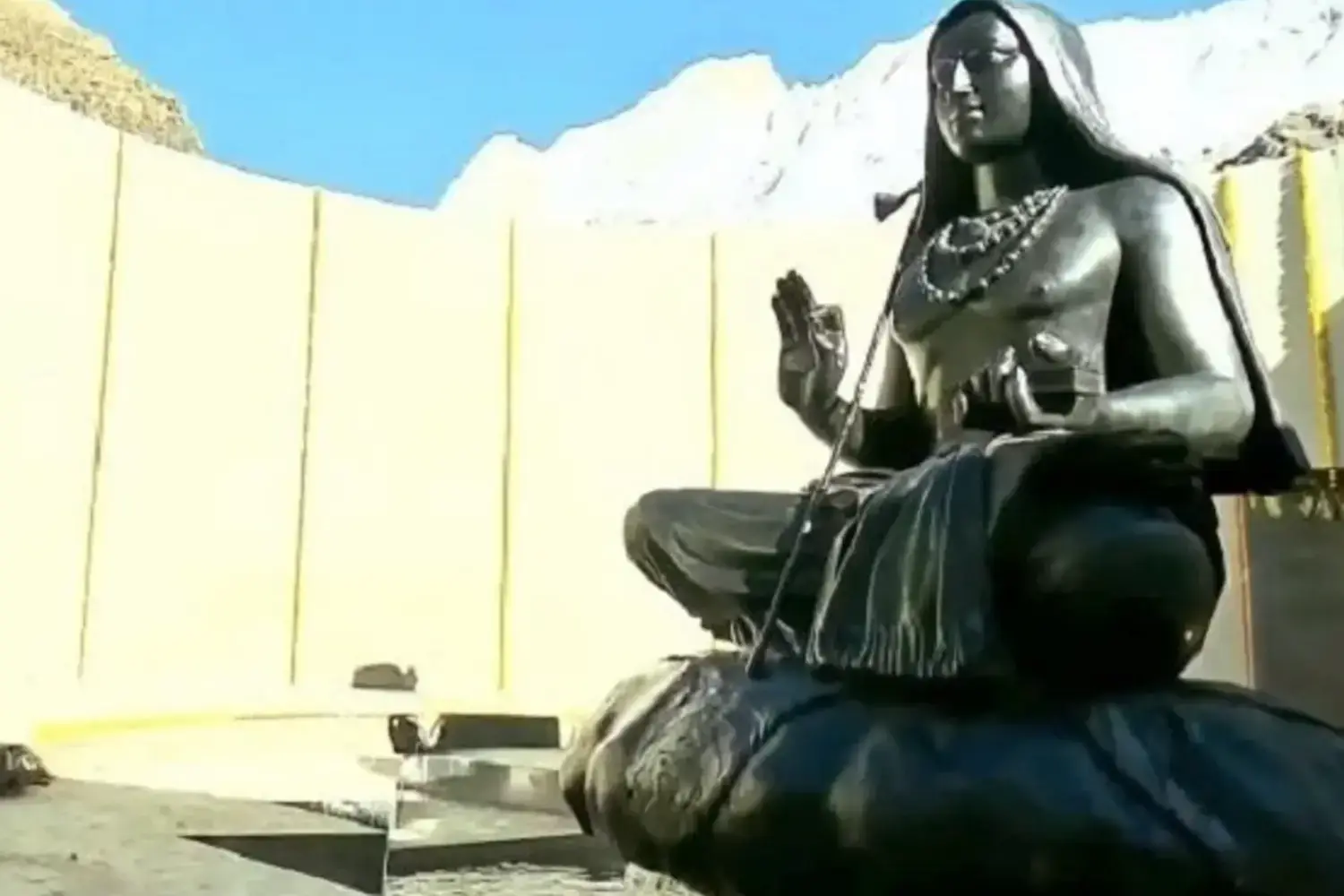
Adi Shankaracharya Samadhi
The Samadhi of Adi Shankaracharya, the great Indian scholar and philosopher, is located just behind the Kedarnath Temple. A 12 feet high statue of Adi Guru Shankaracharya is placed here over a Shri Yantra. Adi Shankaracharya was the one who revived and built the Kedarnath temple in the 8th century and also attained nirvana at Kedarnath. Adi Shankaracharya Samadhi symbolises the history, heritage, and spirituality of India.
Meditation Caves
Kedarnath Cave or Rudra Gufa are meditation caves designed for spiritual tourists in Kedarnath who want to experience peaceful solitude in this popular destination. Just one kilometre from Kedarnath temple, these caves are the perfect place for meditation, Yoga, and spiritual practices. Kedarnath Caves are built in traditional Garhwal style and work as an accommodation option which can be booked through GMVN's website. The cave accommodates only one person and has basic amenities like a bed, attached toilet, water, electricity, and CCTV surveillance. There is always an attendant present at the cave for any help.
Ghats and Retaining Walls
After the floods in 2013, ghats and stone embankments of 350 metres were constructed in order to preserve the heritage and avoid certain destruction in the future. These are created on the eastern as well as the western sides of the Saraswati - Mandakini rivers for puja and mentioning the river path. Besides this, the use of the retaining wall will help prevent soil erosion at the site. There are cafeterias, Washrooms, quarters for purohits, dressing rooms, and a common visitors facility pavilion beside these embankments. Paintings, murals, and artwork will also be made on these.
Bio-Digestible Toilets on the Kedarnath Trek Route
The Kedarnath Dham now has as many as several hundred toilets; bio-digesting toilets fabricated by DRDO that use bacterial action to turn the contents into water and air; portable, making the pilgrimage to Kedarnath smoother and greener.
Waste Management at Kedarnath Area
The Kedarnath government is putting effort into solving waste problems like food waste, Temple waste, bio-medical waste, construction waste etc. The Recykal Deposit Refund, Material Recovery Facility and Micro Auto Gasification System are some organisational systems that are being incorporated to strengthen waste management. A 5R method, which is a mixture of 3R and 5R methods, is used to combat wastes appropriately.
Traffic Management System
Now the Kedarnath shrine has intelligent Traffic management and walking pathways to avoid congestion during peak rush. Regardless of the architecture of Shri Kedarnath Mandir, it is symbolically and physically open to the public. These streets now have dedicated guidelines with benches, luminaires, dustbins, planters, and sculptures.
IT Connectivity and Digitalisation
The valley of Kedarnath has the basic local internet facility through radio frequency-based networks; facilities such as WiFi and outdoor audio systems such as the “Smart Public Address System”.
Disaster Management System
An effective disaster management system is critically required because of the vulnerability of the site to earthquakes and floods. SOPs for risk control for example identification, training, and retraining programs have also been established. In addition, proper civil structures like retainer walls and embankments have been put in place. The element also has arrangements and systems for evacuation, disaster, and refuge to accommodate 28,000 individuals if there are catastrophes. Loudspeakers have been incorporated in the site through a Smart Public Addressal System that can withstand harsh weather.
Some further developments to see in the future-
Smriti Vana Memorial
Smiriti Van is a project by the Uttarakhand government that will have the details of people who lost their lives in the 2013 Kedarnath floods. This project will be created on the line of the 9/11 memorial, Ground Zero in New York, and other similar sites around the world. It will be made by utilising all the large boulders from the 2013 landslides and promoting the site as an eco-tourism site. The Smriti Van will preserve indigenous plant species and foster the local culture.
Construction of the Cable Car
Every pilgrim has to do a long 14-kilometre trek or take a mule ride to reach the Kedarnath temple from Sonprayag (the last motor-accessible village before Kedarnath). Not in the near future though. A Cable car/Ropeway will be built between Sonprayag and Kedarnath, to let pilgrims cover the long trekking distance more comfortably and quickly. This 12.5 km long ropeway will reduce the time required to reach Kedarnath from 6-8 hours to 1 hour.
Laser/Light and Sound Show
A light show has been conceived as a means of displaying the religious importance of Kedarnath. This 25-minute-long laser light show displays the story of the epic Mahabharat and the Kedarnath tragedy of 2013. Its aim is to show the cultural and historical journey of Kedarnath to the pilgrims. This light show was first conducted in 2018 at the opening ceremony of Kedarnath Temple. Kedarnath laser light show may become a regular event in the future.
You Might Also Like to Read
- The History of Kumbh Mela
- Chardham Yatra Offline Registration
- Tungnath Temple Opening & Closing Dates
- 12 Jyotirlinga Temples in India
- Madmaheshwar Temple Opening & Closing
- Badrinath & Hemkund Sahib Helicopter Yatra Services
- Kedarnath Yatra Helicopter Booking Guide
- Online/Offline Registration information for Chardham Yatra
- Char Dham Yatra by Helicopter
- Top Things to Carry with Chardham Yatra
- Best Places to Visit in Uttarakhand
- Best Places to Stay in Badrinath
- Best Places to Stay in Kedarnath
- Rudranath Temple Opening & Closing
- Online Puja Booking at Badrinath & Kedarnath Temple
- Places to Visit Near Badrinath Dham
- Akshaya Tritiya Festival Information
- Best Places to Explore Enroute Kedarnath Dham Yatra
- Ranikhet Tourism- Top Places to Explore & Things to Do
- Kalimath Temple Information
- History of Shri Kedarnath Temple
- Badrinath Temple History
- Gangotri Temple History
Popular Tours
Book The Tour
Char Dham Temples
Hotels in Chardham Circuit
Char Dham Tour Packages
- Char Dham Yatra From Delhi
- Chardham Yatra From Mumbai
- Char Dham Yatra From Ahmedabad
- Chardham Tour with Hemkund Sahib
- Chardham Yatra by Helicopter
- Char Dham Yatra with Vaishno Devi & Amritsar
- Chardham Tour with Gomukh Trek
- Char Dham Packages From Bangalore
- Chardham Yatra From Chandigarh
- Char Dham Yatra with Auli
- Char Dham Yatra From Hyderabad
- Char Dham Yatra with Vaishno Devi, Jwalaji & Amritsar
- Char Dham Yatra From Chennai
- Chardham Packages From Bhopal
- Char Dham Yatra by Luxury Vehicle
- Char Dham Yatra with Satopanth Lake
- Char Dham Yatra with Panch Badri Tour
- Char Dham with Valley of Flowers
- Chardham Yatra with Mahavatar Baba and Nainital Tour
Do Dham Yatra
- Badrinath Kedarnath Yatra From Haridwar
- Badrinath Kedarnath Yatra
- Gangotri Yamunotri Yatra
- Gangotri Yamunotri Yatra from Haridwar
- Kedarnath Badrinath Yatra with Hemkund Sahib
- Kedarnath Badrinath Yatra with Valley of Flowers
- Kedarnath, Badrinathdham With Lake Of Nainital
- Yamunotri, Gangotri with Lake of Nainital
Ek Dham Yatra
- Badrinath Pilgrimage Tour
- Kedarnath Pilgrimage Tour
- Gangotri Pilgrimage Tour
- Yamunotri Pilgrimage Tour
- Kedarnath Yatra By Helicopter
- Badrinath Dham Yatra from Haridwar
- Badrinath Yatra with Hemkund Sahib
- Badrinath Yatra with Valley of Flowers
- Gangotri Dham Yatra with Gaumukh
- Kedarnath Dham Vasuki Tal Trek
